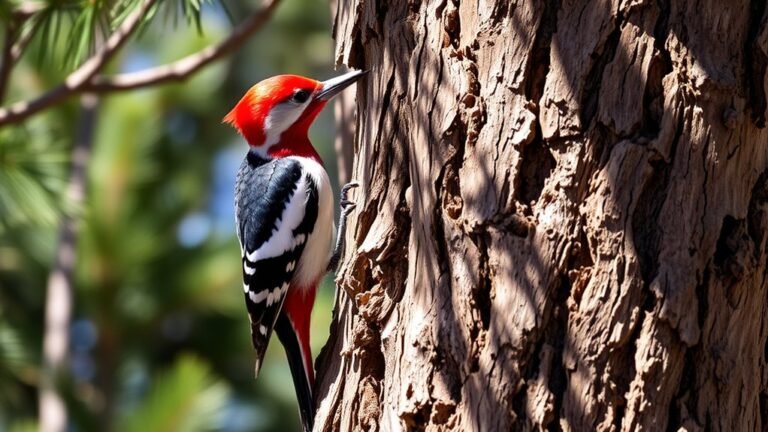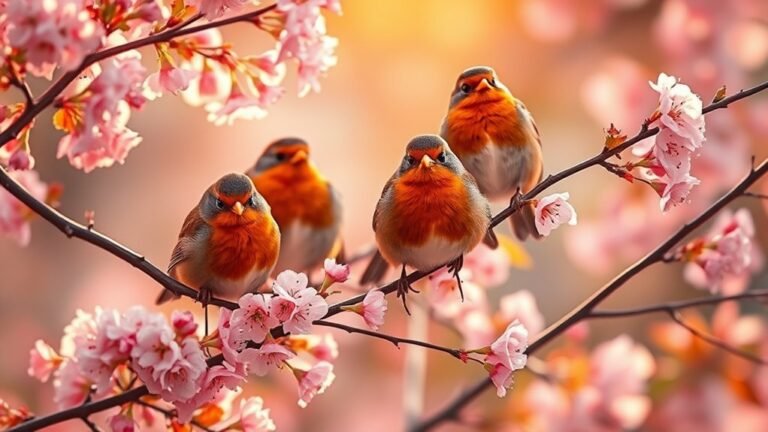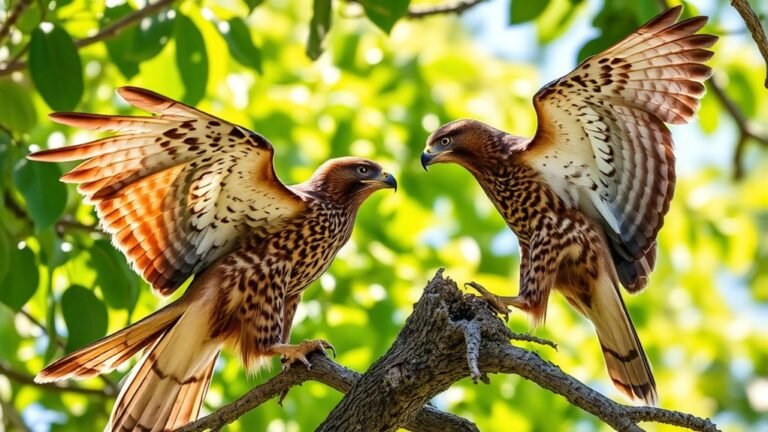Birds of Minnesota: A Birdwatcher’s Guide
As a birdwatcher in Minnesota, you will see many different birds in various places. To recognize these birds, you need to know when they are here, how they act, and where they like to be. Minnesota has great spots for birdwatching, like the Minnesota Valley National Wildlife Refuge and the North Shore. Each place has special birds to find.
Some birds are harder to spot than others. Learning about their habits and which seasons they prefer can help you track them better. Keep your eyes open and enjoy the beauty of birdwatching in this amazing state!
A Quick Overview
Birdwatching in Minnesota: A Simple Guide
Minnesota is a great place for birdwatching! You can visit spots like the Minnesota Valley National Wildlife Refuge and the North Shore of Lake Superior to see many kinds of birds.
Seasons and Birds
Each season brings different birds. In spring, you hear cheerful songbirds. In summer, birds are busy making nests. Fall is all about migration when birds move to warmer places. In winter, you can see the tough birds that stay here.
Identifying Birds
To spot different birds, look at their colors, size, shape, and actions. Also, notice where they like to be. Can you see a bright yellow bird? Or a small, brown one hiding in the grass?
Look for Special Birds
Keep an eye out for special birds like the endangered Piping Plover and the shy LeConte's Sparrow. They are not easy to find, but they are exciting to spot!
Help Birds Thrive
You can help birds by joining in on projects that restore their homes. Participate in citizen science activities or attend programs that teach about protecting birds. Every little bit helps!
So grab your binoculars, head outdoors, and enjoy the wonderful world of birds in Minnesota!
Top Birdwatching Locations in Minnesota

Minnesota is full of great places to watch birds. If you want to see different types of birds, check out the Minnesota Valley National Wildlife Refuge. It's a fantastic spot for seeing waterfowl.
Another great location is the North Shore of Lake Superior, where many birds stop while migrating.
Each spot in Minnesota has its own unique scenery, like wetlands and forests. This variety makes it easier and more fun to find and watch birds.
Joining local birdwatching clubs can also make your experience better. These clubs often have guided outings and events where you can learn more about birds and meet other birdwatching fans.
Talking with experienced birdwatchers can help you become better at spotting birds and also create friendships in this fun hobby.
Seasonal Birding: What to Expect Throughout the Year

In Minnesota, the types and numbers of birds change with each season. In spring, many songbirds come back from their winter homes. You'll see bright colors and hear their beautiful songs as they find food and settle down to build nests.
During summer, there are lots of birds building nests and raising their young. They're active and easy to spot during the day.
As fall comes, many birds start their journey south again. You might see them flying in groups as they prepare to leave.
Winter is quieter for birdwatching, but you can still see tough birds like finches and woodpeckers. These birds can handle the cold and look for food like nuts.
Watching how birds change through the year helps us appreciate the wide variety of birds in Minnesota. It's a fun way to connect with nature!
Identifying Common Bird Species

Knowing the common bird species in Minnesota can make your birdwatching more fun all year round.
Here are some easy tips to help you spot and identify these birds:
- Look at Colors: Check the color of the body, wings, and any special markings. This can give you big clues.
- Size and Shape Matter: Think about how big the bird is and what shape it has. Compare it to birds you already know.
- Watch Their Actions: Pay attention to how they eat and fly. These habits can tell you a lot about the bird.
- Notice the Place: Different birds like different spots. See where the bird is, as this can help you figure out what kind it is.
By using these tips, you'll enjoy birdwatching even more!
Happy birdwatching!
Unique Birds of Minnesota: Rare Finds
Minnesota has some special birds that you mightn't see every day. These unique and rare birds make birdwatching in the state exciting for those willing to look for them.
If you search along sandy shores, you could see the endangered Piping Plover. Look out over remote waters, and you might spot the striking Black-capped Petrel flying high above.
Another interesting bird is LeConte's Sparrow, which hides in quiet wetlands. Finding these rare birds takes time and careful watching. They usually stay in hard-to-reach places, so be ready for a little challenge.
Joining local birdwatching groups can help you learn more and meet other bird lovers. They can share tips and stories about spotting these amazing birds.
Essential Birdwatching Gear and Tips
If you want to enjoy birdwatching in Minnesota, having the right gear can make a big difference. Here are four important items you should have:
- Binoculars: Get a pair of binoculars that fit your hands well. Look for clear lenses so you can see birds up close. You can choose compact, mid-size, or full-size binoculars based on what feels best for you.
- Field Guides: Buy a field guide that focuses on birds in Minnesota. This will help you learn how to identify birds and understand the different species you might see.
- Notebook: A notebook is great for keeping track of the birds you see. Write down your sightings and notes. This can help you remember your experiences and notice how much you've learned.
- Comfortable Shoes: Wear good walking shoes. You'll be moving around a lot while looking for birds, so it's important to stay comfortable.
With these items, you'll enjoy birdwatching even more. You'll learn a lot about the amazing birds in Minnesota and have a great time doing it!
Understanding Bird Behavior and Habitats
Understanding how birds act and where they live is important for birdwatchers who want to get better at spotting different types of birds. Watching birds during their mating rituals helps you learn about their social habits and how they raise their young. For example, the American Woodcock has special dances during courtship that are fun to watch and make you appreciate this bird even more.
Also, paying attention to how birds eat shows us their roles in nature. Different birds have different ways of finding food. Chickadees search carefully for seeds, while hawks hunt aggressively for their prey.
Knowing how birds behave and where they like to live helps you recognize them more easily. It also helps you feel closer to the birds in your area, making your birdwatching experiences even more enjoyable.
Conservation Efforts for Minnesota's Avian Populations
When you go birdwatching in Minnesota, it's great to know about the conservation efforts that help protect our birds.
These efforts are important, and you can be a part of them.
Here are four key ways to support bird conservation:
- Habitat Restoration: Many groups are working to fix wetlands and forests. These places are vital for birds to nest and live.
- Citizen Science Projects: You can help by gathering data for these projects. Your observations can guide conservation strategies.
- Educational Programs: Workshops teach people about bird conservation. They help everyone connect better with local birds.
- Advocacy Groups: Joining a local bird club can make your voice stronger. These groups push for bird-friendly rules and habitats.
Being involved in these efforts helps birds in Minnesota thrive!
Frequently Asked Questions
What Are the Best Times for Birdwatching in Minnesota?
To have a great birdwatching experience in Minnesota, go birdwatching in the spring and fall. This is when many birds are migrating. The best times to watch them are in the early morning and late afternoon. During these times, you can see different birds as they pass through Minnesota. This is a wonderful way to connect with the birds around you. Grab your binoculars and enjoy the beautiful sights!
Can I Birdwatch in Winter?
Yes, you can birdwatch in winter! During this time, you can spot winter birds like cardinals and finches. To see more birds, try bird feeding. Put up feeders in your yard to attract them. This will help you enjoy birdwatching and connect with birds in your area. Have fun watching!
Are There Guided Birdwatching Tours Available in Minnesota?
Yes, you can find guided birdwatching tours in Minnesota. Many tour companies offer these trips. The guides share interesting facts about bird behavior and local habitats. This helps you enjoy your time birdwatching and learn more about birds and where they live. It's a great way to connect with nature!
How Do Weather Conditions Affect Birdwatching?
Weather affects birdwatching a lot! Different weather conditions can change where and when birds fly. For example, when it gets warmer, some birds come back from their winter homes. Rain can make birds hide, while windy days can help birds fly faster.
When you watch birds, you can see how they react to the weather. They might change what they do based on if it's sunny, rainy, or windy. This shows how nature works and how all living things depend on the weather. Being aware of the weather can make birdwatching more exciting and fun!
What Birdwatching Apps Do You Recommend?
When picking birdwatching apps, you should try Merlin Bird ID and iBird. Both apps are great for helping you identify birds. They are easy to use, too. You can find pictures and sounds of birds quickly.
Merlin Bird ID lets you answer a few questions about the bird you saw. Then, it shows you possible matches. iBird has detailed guides on many bird species.
Both apps let you connect with other birdwatchers. You can share your bird sightings and learn from one another. These features make birdwatching more fun and exciting. So, if you want to spot some birds, give these apps a try!

Luna is the passionate founder and author of Birds and You, a website dedicated to sharing her love for birds with fellow enthusiasts. Through her engaging articles and guides, she aims to educate and inspire others to explore the fascinating world of birds. When she’s not writing, you can find Luna observing birds in their natural habitats or sharing beautiful bird photography on Pinterest. Join her on this journey to celebrate and protect our feathered friends!







